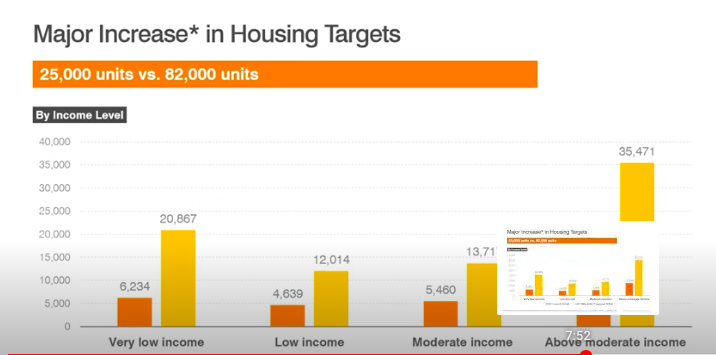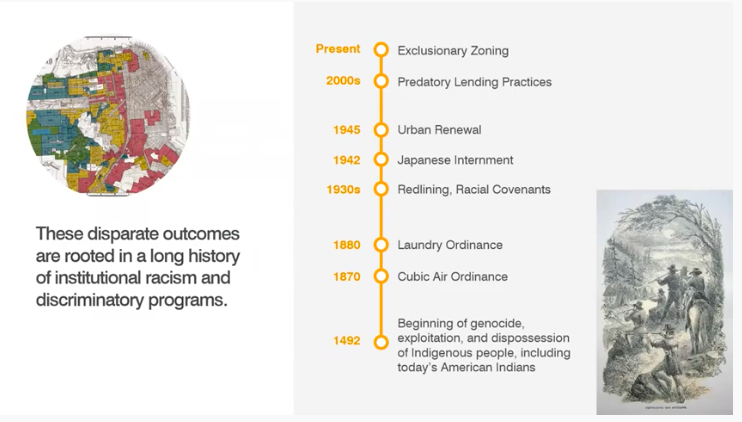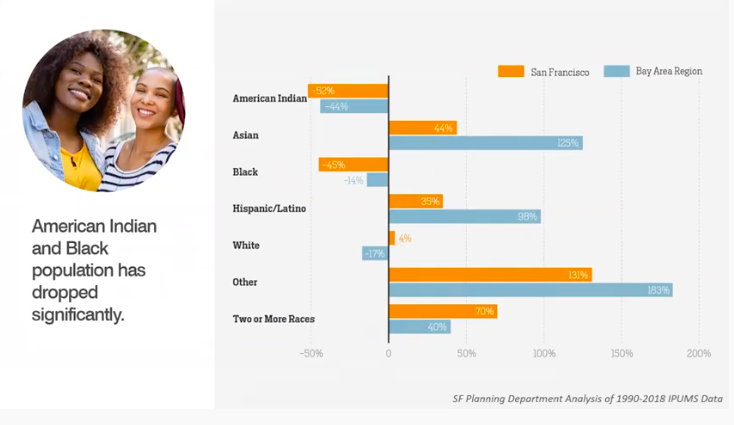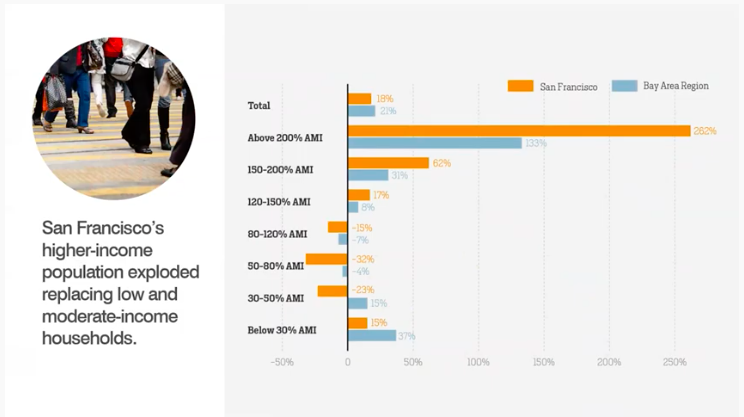The Chron is all aflutter about the possibility that cities might not comply with State Sen. Scott Wiener’s new law, SB 9, which allows multiple units on lots that have in the past been zoned for single-family housing.
And it’s true that some communities, under pressure to accept more density, have essentially promised to allow housing on sites where it will never be built.
But there’s an interesting twist going on here. Under the new state rules, the Housing Element of a city or county General Plan is actually supposed to have some legal meaning. Local zoning laws are supposed to follow that plan.

For years, the Housing Element in San Francisco has been little more than a fantasy. And now, it will take more than new zoning laws to enact a functional plan.
The current document, created in 2014, calls for all kinds of good things, including the creation of a lot more affordable housing. According to the planners who crafted this, the city needs far more below-market-rate units than market-rate units.
Yet the city has never provided anywhere near the resources needed for the affordable units—and the Planning Commission has continued to approve, without regard for the impact on low-income residents, far more luxury condos and rentals than the city needs.
So now the Planning Department is working on a 2022 update, and the commission will hear a report on it Thursday/14. The planners have prepared a series of videos about the goals of the new Housing Element, and you can watch them here. The department has set ambitious goals for community outreach.
For the first time in history, the department says, the new Housing Element will be guided by a racial justice and equity agenda. It seeks to
Help us save local journalism!
Every tax-deductible donation helps us grow to cover the issues that mean the most to our community. Become a 48 Hills Hero and support the only daily progressive news source in the Bay Area.
Repair the harms of historic racial, ethnic, social discrimination for American Indian, Black, and other People of Color and … Foster racially and socially inclusive neighborhoods through distinct community strategies.
It actually includes the words “right to housing:”
Recognize right to housing as a foundation for health, and social and economic stability.
It calls for 5,000 units of supportive housing and a “right to return” for communities forced out by past redevelopment programs.

It’s fascinating to watch the videos: At one point, the department admits that the “jobs economy” promoted by former Mayor Ed Lee (and enthusiastically supported by the Planning Commission and many current political leaders, including Wiener, Mayor London Breed, and Assemblymember David Chiu) failed to deal with the impacts on the city’s housing market.

During that tech boom, the department admits, “San Francisco’s higher-income households exploded.”
More: The video states that the city has promoted housing as a commodity rather than a human right.
There is, of course, no apology, and nobody is held accountable for allowing a massive human tragedy to happen in the name of a “jobs economy.”
But hey, we’ll take what we can get, and let’s move on.
Much of the discussion and debate over this, and other, housing elements is going to focus on a certain type of zoning—that is, where will new housing, and new affordable housing, go.
The Planning Department makes clear that much, much more density needs to go in “Housing Opportunity Areas,” which are defined as places where amenities are plentiful, schools are good, and zoning restricts multi-family units.
That’s most of the West Side of San Francisco, which the planners say should be zoned to allow about 40,000 new housing units. (Another 40,000 would go on the East Side of town. More on that in a moment.)
This will, I fear, be the crux of the discussion: Should single-family zoning be phased out in the Sunset, the Richmond, St. Francisco Wood, West of Twin Peaks, and the other Usual Suspects?

I think that misses the point.
Dividing a single-family lot into two or three or four lots doesn’t in any way guarantee that the new housing will be affordable to any of the vulnerable communities that the city now acknowledges need priority consideration.
Take a sizable single-family lot with one house on the West Side. Maybe it sells for $1.5 million. Tear down the house and build four units on the site—and then tell me each one of them is going to sell for less than $1million.
The developer makes a killing. There’s no new affordable housing. That’s not how the market works.

That’s because all of this is still driven by the fundamentally flawed neo-liberal idea that the private sector will solve our housing problems. Have none of the Yimbys and their allies read David Harvey?
I give the planners credit: They actually address the issue of stabilizing existing vulnerable communities. But in practice, that might mean banning new market-rate housing in areas where it would lead to displacement.
The current Planning Commission has never, ever, rejected a luxury housing project on the grounds that it could drive up land prices and rents in a low-income area and force existing residents out of town.
Imagine a Housing Element that put that into the force of law. It would mean no more high-end condos in the Mission or Bayview Hunters Point or parts of Soma. It would radically change city planning policy.
Will this mayor and this commission really accept that concept?
Let’s remember, as this discussion goes on, that the city doesn’t “build” housing. The city allows private developers to build housing. And for-profit private developers will only build housing that provides a high rate of return for international speculative capital.
Nonprofit developers know how to build housing, too. They just need public money to make the numbers work. At that point, the issue is less where the housing is built (and I’m all for building dense, non-market housing all over town, including the West Side) but who pays for it.
A Housing Element that says, as a matter of enforceable law, that San Francisco needs to raise whatever taxes on private developers and the wealthy that it takes to build the proper mix of affordable housing would be a wonderful thing.
That’s not what Scott Wiener had in mind with his state laws. I suspect it’s not what the mayor or the planning commissioners have in mind either.
Local advocates have been pushing Mayor Breed to declare a state of emergency on drug-overdose deaths, which might create the legal authority for the city to create safe-injection sites. Wiener has state legislation that would allow the sites, but it’s been delayed repeatedly.
The Public Safety and Neighborhood Services Committee will hold a hearing Thursday/14 on a resolution calling on the mayor to “immediately authorize, fund, and implement overdose prevention sites.”
It will be interesting to see how the Department of Public Health responds.



